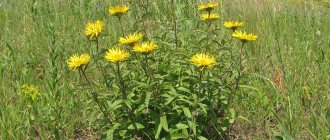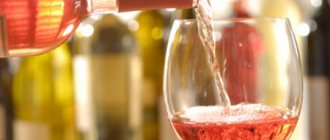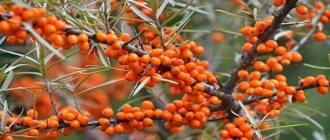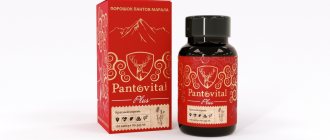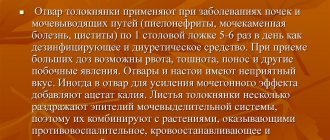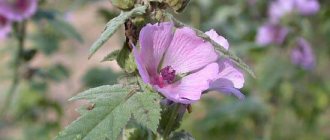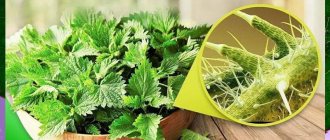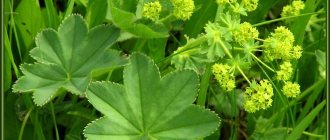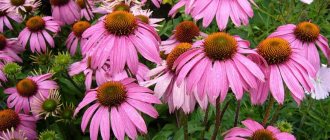Plantain belongs to the plantain family, a genus of one - and perennial herbs. The plant is widespread around the globe; many types of plantain are classified as weeds.
The leaves are petiolate, collected in a single basal rosette, permeated with fibers along the entire length. The rhizome of plantain is short, and the roots have a cord-like shape. The peduncle is erect, with small flowers. Numerous fruits are a capsule with many seeds.
The plant has nutritional value: it is used not only as plant food for animals, but also added to salads and vegetable soups.
general characteristics
Do you think that all plantains are the same? You are deeply mistaken! Biologists say there are at least 250 varieties of this plant. Most of them are “registered” in the temperate latitudes of the two hemispheres. But there are plantains that do best in the tropics. Also, not all plants in this family have the same life expectancy. Many of them are perennials, but there are also annuals. For example, in the Western Mediterranean, South America and western Asia, annual hare and Lusitanian plantains are found. But if you manage to see a plantain in the desert in northern Africa, then there it will be a shrub with linear leaves collected in a bunch and with capitate inflorescences. Biologists call this variety Moorish. Coastal birds have taken root in the Atlantic, South America and Europe. Some of them consider the shores of lakes, ponds and sea coasts their home, others feel more comfortable in regularly flooded places. Another amazing member of the family, the Bugiera, is found in the Andes in southern Peru, northern Argentina and Bolivia.
Content:
- general characteristics
- Beneficial features
- How plantain was treated in ancient times
- Modern use in medicine
- Benefits for the skin
- Benefits for the respiratory tract
- Several recipes from traditional healers
- Contraindications
- How and when to prepare
- Other uses
- What to cook from plantain
- Interesting Facts
Almost all varieties are wind-pollinated, although insects also play an important role in this process. Some varieties of this grass have attracted bees and flies. For example, they pollinate the lanceolate plantain. Interestingly, insects only land on inflorescences that still have pollen. By the way, some species of butterflies use plantains as food.
But no matter where the plantain grows, the ovoid leaves of this herb tend to hug the ground. Thanks to this structure of the bush, it is protected from damage - even if someone steps on it, the plant will not break. Another feature of grass is its ability to retain large reserves of moisture. And again, the grass achieves this effect thanks to the special structure of the bush - the soil under the leaves always remains moist. Thus, plantains survive even in the most severe drought and even where other plants die.
Travel card options
A single electronic travel pass provides the opportunity to pay for travel on any type of transport in the city and suburbs with a fixed cost for one trip - metro, buses, trams, trolleybuses and some minibuses.
When purchasing and replenishing Podorozhnik, a resident or guest of the capital is offered a choice of a convenient tariff, expiration date and number of trips. A plastic card is issued to which the top-up amount is credited. Podorozhnik’s tariff policy cannot but please us; you can purchase a pass for a period of 90 minutes to a month; in addition, it is proposed to buy a long-term pass, valid for three years from the last replenishment. The maximum storage amount on the card is 15,000 rubles.
A huge advantage of Podorozhnik is its flexible system of discounts. The user's discount depends on the frequency of use of a particular type of transport. The maximum discount on travel, as a rule, is 5 rubles in the metro, and 8 for ground transport.
A single electronic travel card allows its owners to forget about several travel cards in their pockets, queues, and expiration dates. The main thing is to replenish your transport card in a timely manner.
Beneficial features
This inconspicuous plant, which grows everywhere and is always literally under our feet, is in fact an extremely useful medicinal herb. Plantain is rich in many substances beneficial to humans. It contains vitamins A, , some amino acids, potassium, calcium, and phytoncides. Interestingly, plantain is a rich source of tannins. The concentration of these compounds in grass is almost the same as in oak. And the seeds of the plant are full of omega acids.
Potential Harm
Despite the variety of healing properties, it is necessary to take into account specific contraindications of plantain:
- excessive blood clotting;
- excess acid reflux;
- predisposition to thrombosis;
- individual intolerance.
Women who are breastfeeding or carrying a child must first obtain medical permission.
How plantain was treated in ancient times
Plantain as a medicinal plant is mentioned in ancient Greek, Chinese, and Roman writings. The ancient Egyptians used it to prepare balms, ointments, resins, mixtures, and lotions. Many of these recipes have survived to this day along with ancient papyri. The beneficial properties of plantain were immortalized by the Sumerians with their cuneiform writing on clay tablets.
It would be strange if Chinese medicine ignored plantain. Back in 2006, this plant, along with more than one and a half thousand others, was included in the first Chinese book on medicinal herbs. Eastern doctors often used this plant to heal many ailments. For example, the Chinese used plantain decoction to remove blood from urine. And today this method of treatment has found its scientific explanation: plantain is an effective herbal medicine against inflammation in the genitourinary system. Another interesting way of using this medicinal herb in China is to improve male fertility and stimulate sperm production. But the Indians, who have already been mentioned, after meeting the plantain, also included it in the list of the most useful plants.
Residents of the American continent treated snake bites and facial neuritis with this herb.
The healers of Ancient India used about 750 plants for treatment. One of them is plantain. This herb was used as a medicinal remedy in Arab countries; Hippocrates and the ancient Roman doctors Aulus Cornelius Celsus and Dioxoride knew it. And in 1073, this plant was depicted in the “Selection of the Grand Duke Svyatoslav Yaroslavich.” It is worth saying that in Rus', plantain, as one of the most accessible plants, was used for a variety of ailments. Since the time of Peter the Great, this plant began to be supplied to pharmacies.
Modern use in medicine
Plantain has been successfully used in folk and official medicine for centuries in different countries of the world. The plant extract has many beneficial properties. It has been used since ancient times as:
- pain reliever;
- antiseptic;
- hemostatic;
- diaphoretic;
- diuretic;
- sedative;
- astringent;
- anti-inflammatory;
- antitumor.
Thanks to aucubin, an anti-toxic substance found in the plant's sap, plantain is useful for cleansing the liver. In ancient times, it was used for hemorrhoids, malaria, and inflammatory diseases of the urinary organs. A decoction of the leaves is useful for diarrhea, dysentery, intestinal inflammation, indigestion and poisoning, and inflammation in the kidneys. And the alcohol infusion helps lower blood pressure.
In addition, plantain has tonic properties, which makes it useful for chronic fatigue. It also helps with cardiac diseases such as heart failure, arrhythmia, and cardioneurosis.
To treat drug addiction, seeds are used, from which a mucous decoction is prepared. Plantain seeds are also useful for taming excessive appetite; drugs are prepared from them for weight loss and improving intestinal motility.
Decoctions and water infusions from plantain leaves effectively treat diseases of the digestive organs. In particular, gastritis, enteritis, enterocolitis, heal ulcers in the stomach and intestines.
American researchers have been carefully studying the healing properties of this herb for a long time. And back in 2003, they authoritatively stated: plantain will help treat cancer. Experiments conducted by researchers showed that the extract obtained from plantain leaves inhibits the activity of cancer cells. In particular, scientists have suggested that plantain may be effective for the treatment of malignant tumors in the bladder, bone tissue, liver, cervix, lungs, and stomach. In addition, there are positive results in using the roadside plant extract in relieving herpes.
In homeopathy, this plant is known as a remedy for toothache, otitis media, and even as a potion for depression. The plant extract is included in preparations for flatulence, colitis, hemorrhoids, atherosclerosis, and is also used for poisoning with heavy metal salts and to improve the condition during radiation therapy.
Pharmacy drugs
Pharmaceutical companies produce many psyllium-based drugs. In pharmacy chains you can purchase:
- Juice. An alcohol-containing drug that requires prior dilution in water. Intended for the treatment of skin lesions and for internal use in diseases of the bronchopulmonary and digestive systems.
- Plantaglucide - plantain extract granules for preparing a suspension. Relieves inflammation and pain from hemorrhoids, gastric ulcers and chronic gastritis with low acidity.
- Fibralax is a powder for making a suspension. It is used for pathologies of the male and female reproductive system, as well as for the treatment of intestinal problems.
- Herbion is a sweet syrup with plantain extract. The main purpose of the drug is to remove mucus from the bronchi and relieve dry cough. The syrup should not be taken in combination with other cough suppressants.
All medications containing plantain should be taken only on the recommendation of a specialist.
Benefits for the skin
In folk recipes, plantain is mentioned as a cure for skin rashes, acne, and lichen. By the way, for the treatment of skin diseases, plantain is the best medicine that no other medicinal plant can compare with. For healing wounds, especially suppurated ones, there is no better natural medicine than plantain juice. Thanks to its anti-inflammatory and antibacterial properties, this plant will clear away microbes from the damage and speed up healing.
When insect bites, it is important to remember plantain in time. It is enough to apply a crushed leaf of grass to the bite site to pull out the sting of a wasp or other insect from the wound. Some claim that even small shards of glass can be pulled out in this way. The same herbal medicine will help with bites of snakes and other poisonous representatives of the fauna - plantain juice will effectively draw out the poison from the wound. For mosquito bites, the leaves of this herb will help get rid of swelling and itching. But the benefits for the skin don’t end there. Plantain juice will also effectively relieve pain and burning caused by contact with nettle, hogweed, and poison ivy.
As a rule, swelling, redness, itching and burning disappear within 10-15 minutes after treatment with plantain compresses. But in especially severe cases, pulp from the leaves or compresses from the juice will have to be applied to the sore spot every 4 hours.
Plant preparations
In folk medicine, not only the leaves are used, but also the inflorescences, roots, and seeds of this herb. Moreover, each part of the plant has its own recommended collection period.
Collection
If you plan to collect only the leaves, you can do this throughout the summer until they begin to turn yellow.
I advise you to collect in dry and sunny weather, because leaves wet from rain or dew will begin to deteriorate very quickly.
It is better to dig up the roots of the plant in the fall. After this, clear them of soil, rinse and dry.
Seeds should be collected when they are fully ripe - from August to the end of September or beginning of October.
Here I have only briefly touched on the key points. Read more about harvesting plantain in our separate article.
Benefits for the respiratory tract
The leaves of this herb are known as a remedy for cough, respiratory diseases, bronchial asthma, whooping cough, tuberculosis, pleurisy, and upper respiratory tract diseases. To treat these diseases, infusions or decoctions of fresh herbs are usually used.
Bulgarian researchers have scientifically confirmed that plantain is an effective medicine for chronic bronchitis. And German experts consider this plant one of the most useful for treating coughs in young children.
A medicinal decoction is prepared from both fresh and dried herbs. For a glass of boiling water, take either a tablespoon of dry raw materials or 5 fresh leaves. Bring to a boil and leave to steep for 20 minutes. As a rule, a little honey and lemon are added to the finished tea, which enhance the healing properties of the decoction.
Compound
The healing properties of plantain are due to the presence in its composition:
- Aucubin and its derivatives . This glycoside is found in all parts of the plant and has pronounced anti-inflammatory properties. In the body, it provides a bactericidal and antitumor effect, helps fight viruses more successfully, and improves digestion.
- Slime . Its content in seeds reaches 50%. Mucus well envelops the inner surface of organs, softens and relieves inflammation. It alleviates the condition during exacerbation of peptic ulcers, reduces the activity of viruses.
- Dietary fiber . Their maximum concentration is contained in plantain husk. It is a good absorbent that cleanses the intestines of decay products, waste and toxins. Plant fibers help reduce body weight, improve food digestibility, and reduce the toxic load on the body.
- Pectins, saponins and flavonoids . Accelerate the healing of wounds and damage to the mucous membranes of internal organs. Stimulate expectoration and eliminate symptoms of respiratory diseases. They effectively reduce the concentration of cholesterol in the blood and have antihypertensive properties.
Several recipes from traditional healers
For digestion
For indigestion and intestinal disorders, a decoction of plantain leaves will help. For 250 ml of boiling water you will need 3 teaspoons of chopped fresh herbs. The infusion is kept for at least 8 hours, after which it is taken three times a day before meals, a tablespoon.
For constipation
If plantain seeds (5 teaspoons) are poured with boiling water (250 ml) and left for at least an hour, you will get an effective remedy for constipation. It should be taken before eating. The usual dosage for adults is 2 teaspoons.
For a cold
As already mentioned, plantain tea is an effective medicine for coughs and colds. To enhance the healing capabilities of the drink, in addition to roadside herbs, you can add coltsfoot leaves, raspberry leaves and berries, and honey to the decoction. The same remedy is useful for reducing body temperature.
From nicotine addiction
To combat the addiction, a decoction of plantain leaves is useful. It is recommended to drink this tea three times a day.
Card activation
Modern residents of the northern capital prefer to save time and not stand in long lines, so they often use non-cash payments. When replenishing the card via online banking or via mobile phone, Podorozhnik requires activation. If you purchase a monthly pass, the month starts counting from the first payment - that is, from activation. Money is transferred to the card instantly, and for it to take effect, you need to take a ride on any transport, touching the “Podorozhnik” to the validator.
Activation using a validator in transport is very simple:
- In the validator menu, select “Wallet Top-up”.
- Attach a single transport ticket to the device and wait for a response from the device.
- After the message “Card recorded” appears on the screen, it can be removed.
- If your balance appears on the validator screen, it means that the activation was successful and you can use your card in any transport in the city.
How and when to prepare
For further use for medicinal purposes, plantain leaves collected in early spring, before the grass has sprouts of inflorescences, are best suited. At this time, the leaves are still full of life-giving juice; later it will go into inflorescences.
Not all varieties of plantain are suitable for herbal medicine. The large plantain, which is easily recognized by its large ovoid leaves, has pronounced healing properties.
Plant species
There are many types of plantain in nature, and no matter how useful it is, biology officially classifies it as a weed. However, this does not prevent the humble plant from being regularly used in various medicines and being a real hero of folk medicine.
Among the most common species in our country are:
- big;
- flea or flea infested;
- lanceolate;
- average;
- Asiatic.
This plant has a small but developed rhizome. Its leaves have a characteristic oval shape and are located in a basal rosette.
The flowers have the appearance of a long spike and can reach a height of 10 to 25 centimeters.
What to cook from plantain
Fresh green salad
The easiest way to prepare a salad is from fresh young greens. In addition to plantain, you can add sorrel, spinach, green salad, young nettles, green onions, and boiled eggs. Oil and lemon juice or mayonnaise are used as a dressing.
Unusual cutlets
Grind the boiled potatoes in their jackets, add the egg and flour to it. Separately mix ground beef, fried onions, chopped plantain leaves, salt, pepper and other spices. Form a flat cake from the potato mixture and place the meat mixture in the center. Form pies. Dip in flour or breadcrumbs and fry in oil.
Kefir cocktail
In a blender, mix kefir, chopped plantain and parsley leaves, walnuts and honey. Beat thoroughly until smooth.
Spread for sandwiches
Wash the plantain leaves, blanch them, and strain off excess water. Then grind the leaves with nettle, sorrel, and sorrel prepared in a similar way. Salt, add vinegar or lemon juice, season with mayonnaise. The finished mixture is suitable as a spread for sandwiches. If you add more mayonnaise to the greens, you can use it as a sauce for cereals, meat, fish, and vegetables.

